
The Bottom Line
Introduction, Specifications, and Pricing
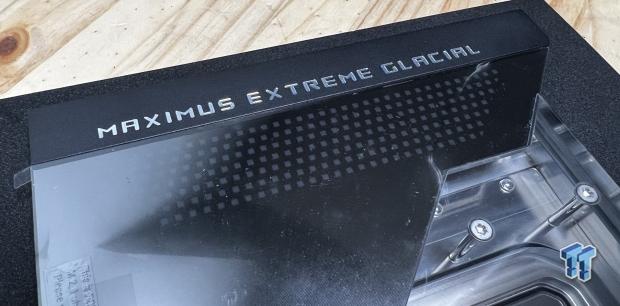
While Maximus Extreme has been the top end of the ROG lineup for the last decade, in more recent years, ASUS has added a second tier to this Extreme SKU. Extreme Glacial, available since Z490, adds an EKWB designed monoblock to the kit, allowing for more efficient heat dissipation, given the consumer builds a legit loop around it; who wouldn't?
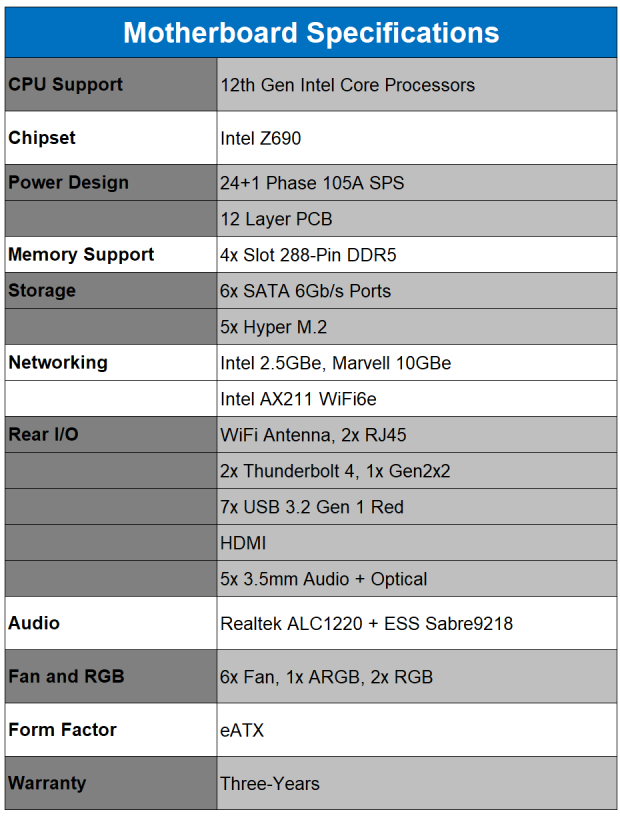
For Z690 Glacial, the hardware platform is identical to the lesser, air-cooled Maximus Extreme. This gives us the LGA1700 socket and, of course, Intel's Z690 chipset. Memory support is over four slots, supporting DDR5 memory with max capacity listed at 128GB.
The expansion includes two PCIe x16 Gen5 slots. These operate in x16 or x8x8 modes, and a third slot pulls from the chipset at x1 connectivity. Storage includes three Hyper m.2 slots onboard and another two available with the DIMM.2 module. SATA includes six ports, all on the right side of the motherboard, and additional expansion is available via the USB 3.2 Gen 1 and 2 headers.
Networking on this board is top end. Mainstream 2.5Gbe and WiFi6e using Intel's i215 and AX211 chipsets while 10Gbe is deployed with the latest Marvell AQC113. Thunderbolt 4 has also made its way onto this platform, two ports alongside USB 3.2 Gen2x2.
Pricing
The ASUS ROG Z690 Maximus Extreme Glacial carries a huge MSRP of $1999.99.

| Today | 7 days ago | 30 days ago | ||
|---|---|---|---|---|
| Loading... | Loading... | |||
|
* Prices last scanned on 12/31/1969 at 6:00 pm CST - prices may not be accurate, click links above for the latest price. We may earn an affiliate commission from any sales.
|
||||
Packaging, Accessories, and Overview
Packaging and Accessories
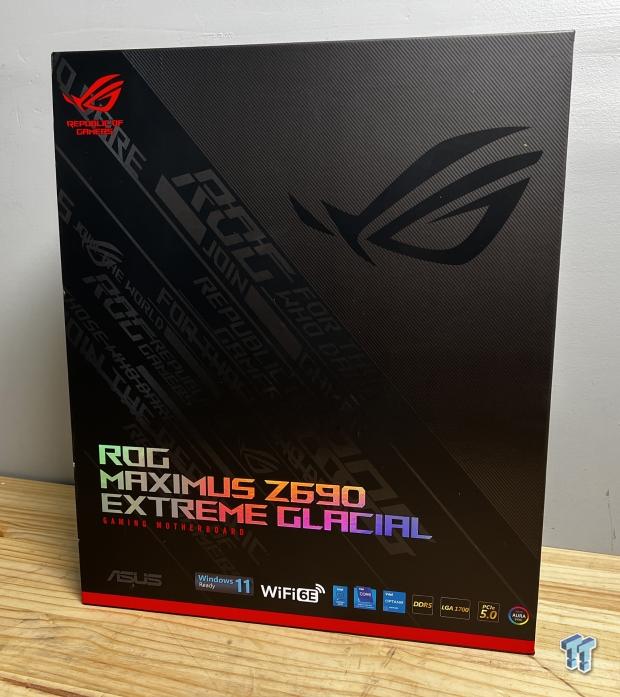
As you can see from the image above, the packaging is typical of ROG platforms. We have branding across the top, chipset, and CPU support at the bottom.

On the back, specifications are listed along the bottom and board layout above.
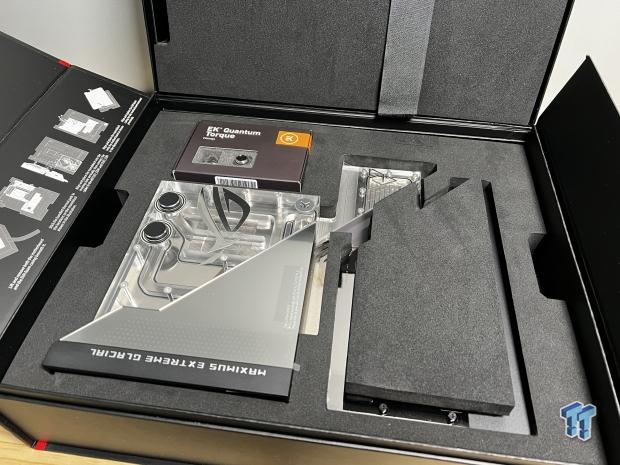
Above, we have the water block, designed by ASUS and EK.
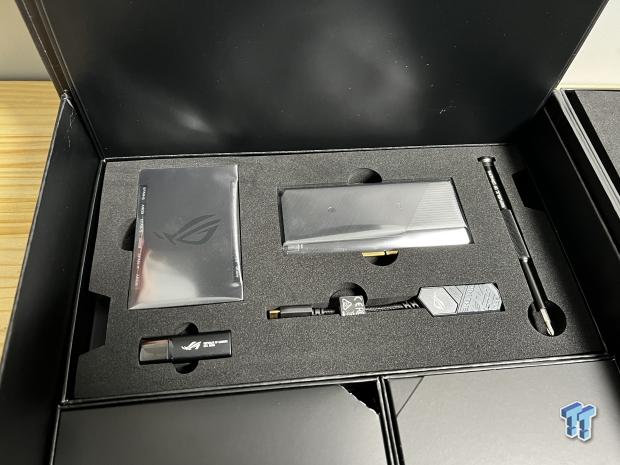
Accessories include the DIMM.2 module to the right, fan, RGB controller to the left, and drivers on USB.
ROG Z690 Maximus Extreme Glacial Overview

The board comes bare, with no heat sinks or rear I/O plate. It does have plastic protecting the chipset.
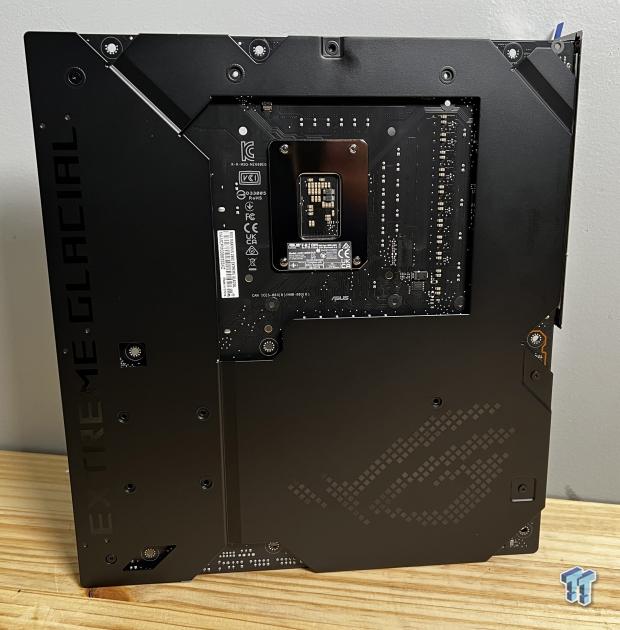
The rear of the board has full armor, adding rigidity.
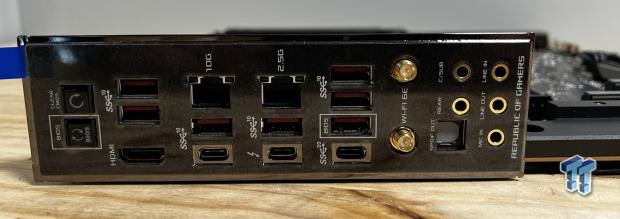
Rear I/O includes Wi-Fi and audio connections plated in gold. HDMI at the top, followed by seven USB 3.2 Gen 1 port scattered and Thunderbolt 4 and Gen2x2 along the bottom.
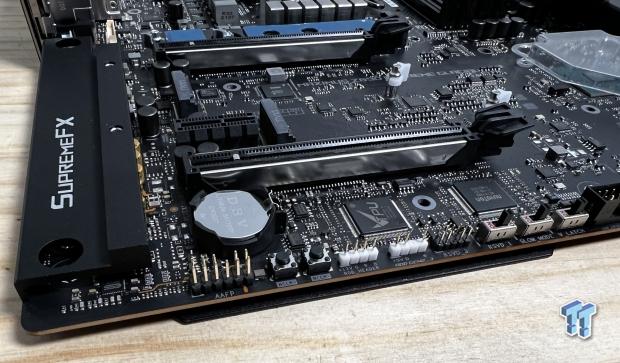
Board layouts start with BCLK up and down button living next to the ARGB headers.
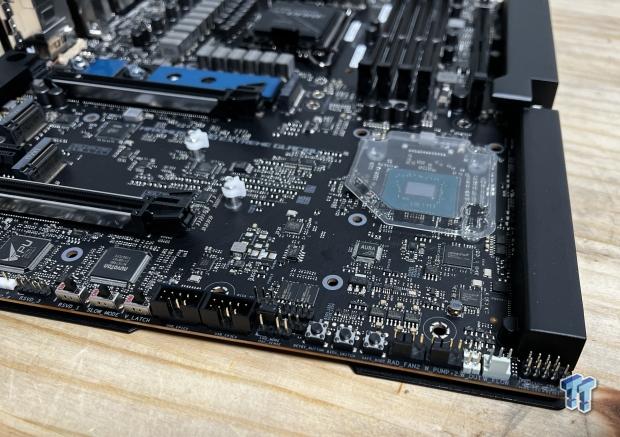
Further down, we have USB 2.0 header and reset, BIOS, and safe boot buttons.
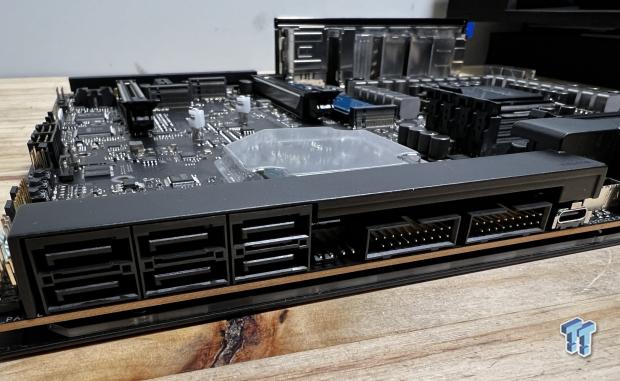
Around the corner, we have all six SATA ports, along with Gen 1 headers.
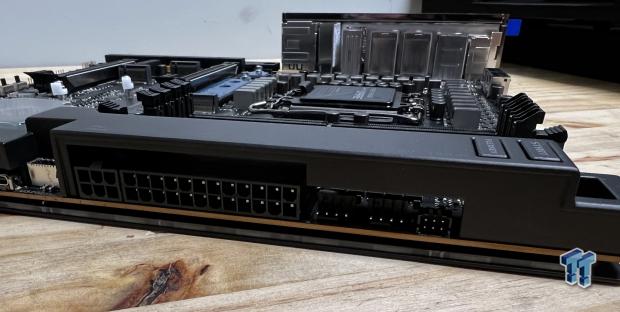
Further up this side of the board, we run into a Gen 2 header, 6-pin power, and the 24-pin.
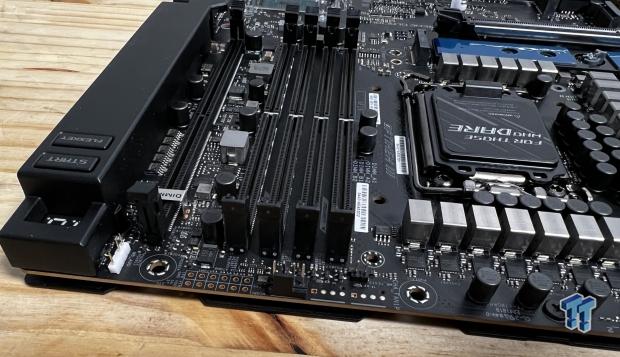
Along the top, we have voltage measuring points and fan headers.
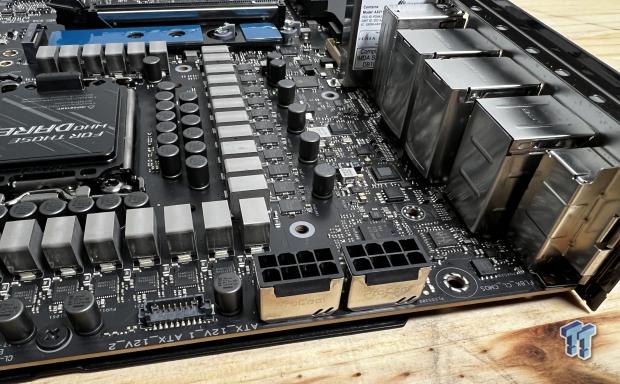
Two 8-pin connections for CPU finish up this board.
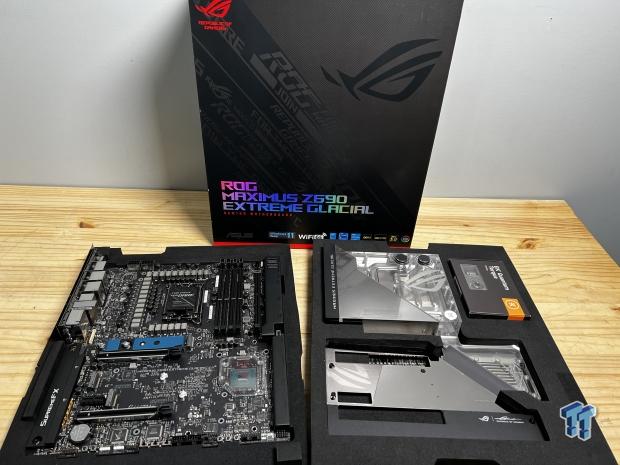
UEFI, Software and Test System
UEFI
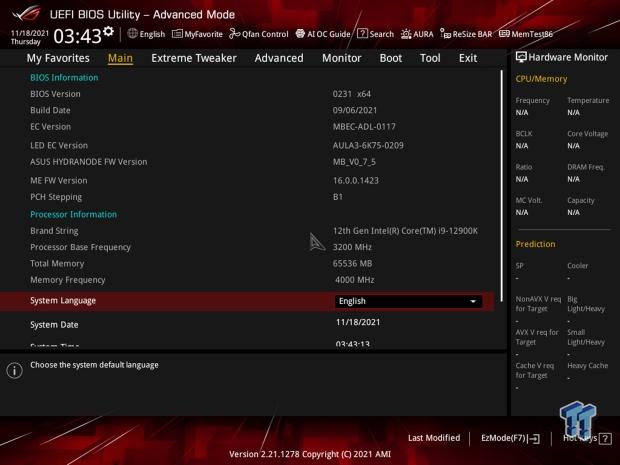
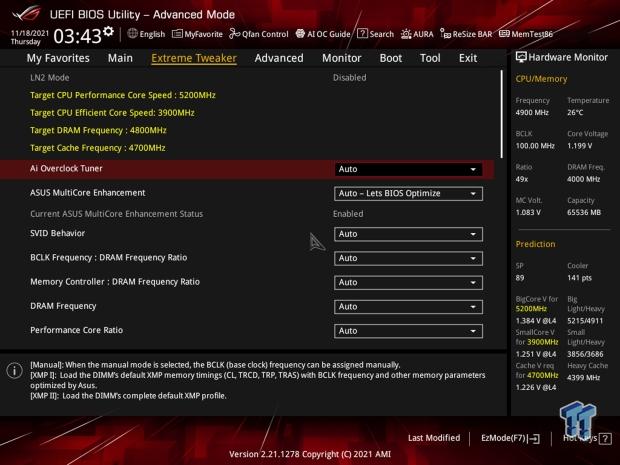
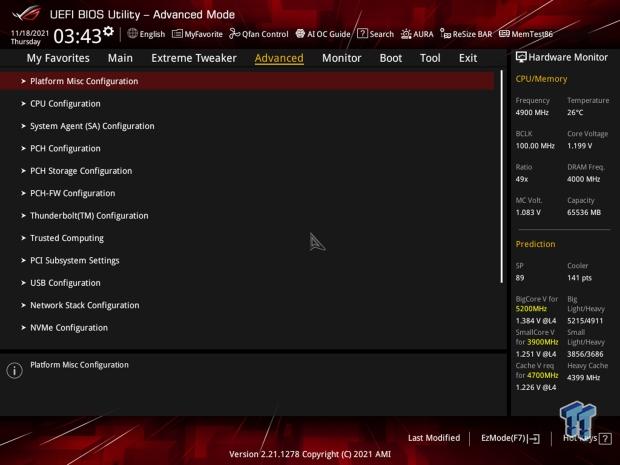
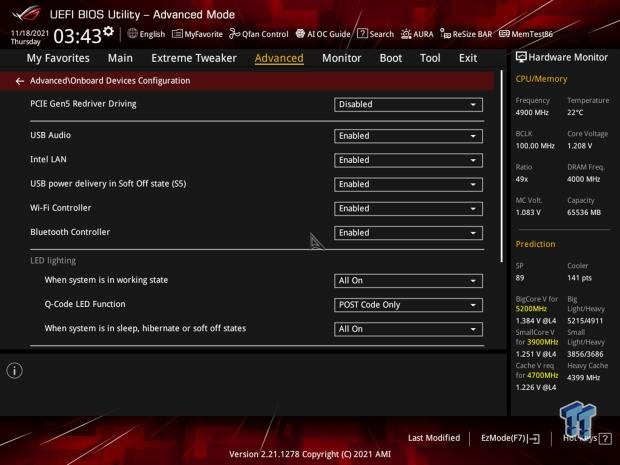
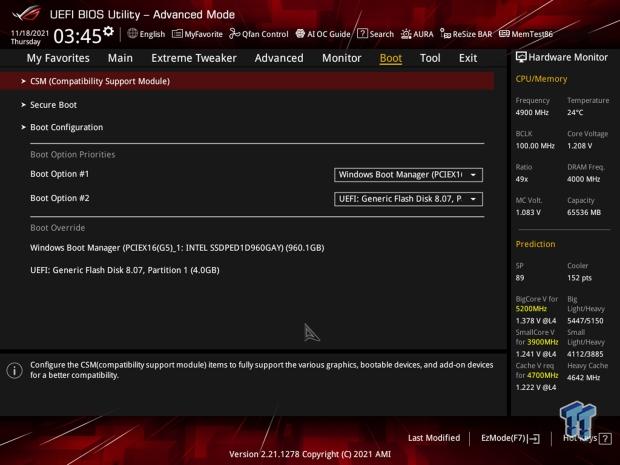
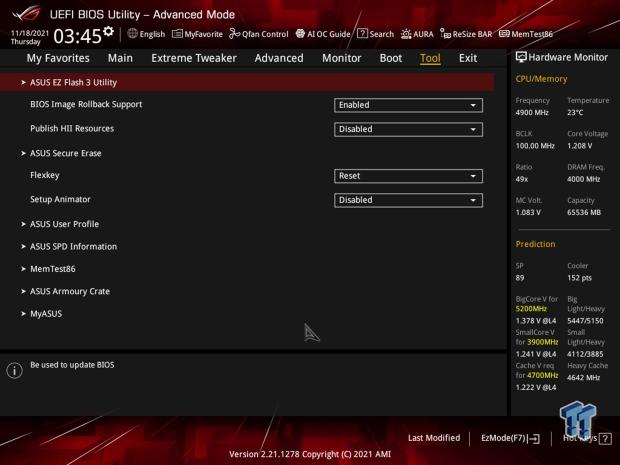
This BIOS should look familiar for anyone that has used a ROG platform in the last few generations. That said, for 12th Gen, we have CPU information in the right panel and BIOS info in the center.
Extreme Tweaker includes current CPU and memory clocks at the top, tuning for both down below. The Advanced menu includes options for SATA storage and PCH along with Thunderbolt and NVMe. CPU config includes the ability to enable/disable cores, including E cores and P cores, separately.
Monitoring is included alongside fan control, while the tool menu allows you to control RGB and Secure Erase storage devices.
Motherboard Software
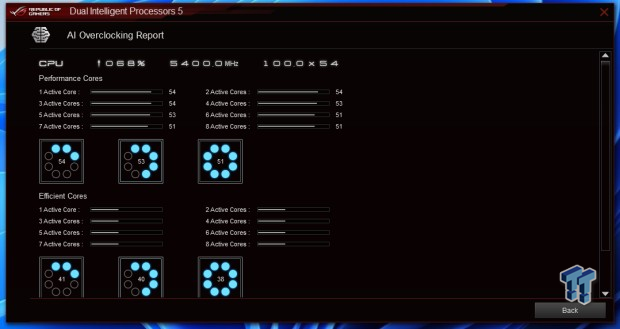
ASUS AI Suite includes software for the motherboard for tuning as well as monitoring.
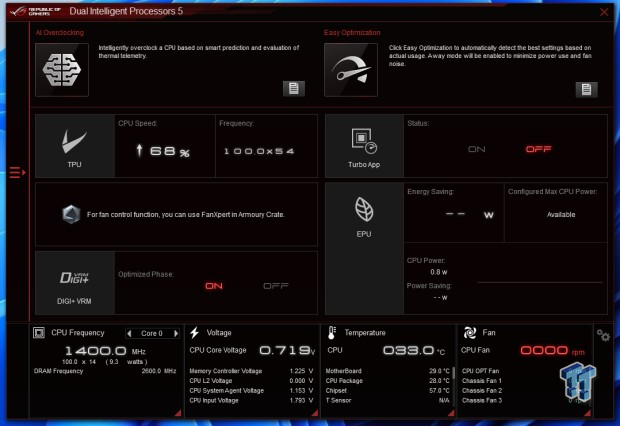
This allows for Auto overclocking and optimization.
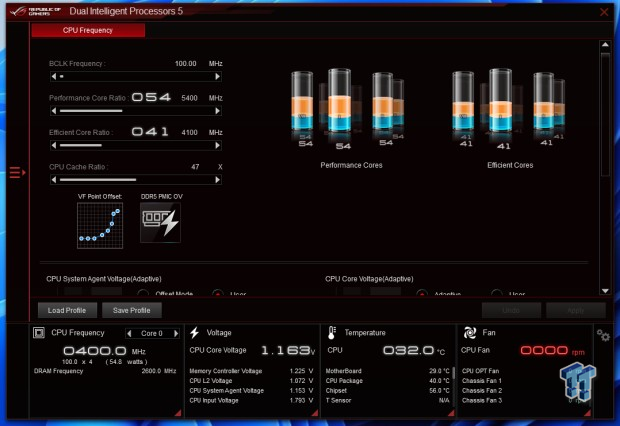
You can also manually tune the system within AI Suite.
Motherboard Testing Supporters
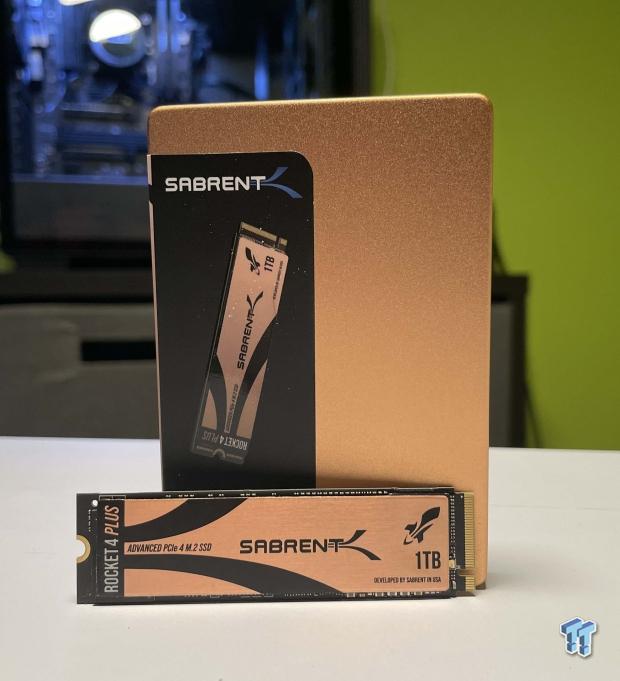
Sabrent supports our storage testing with the Rocket 4 Plus.
TweakTown Intel Motherboard Test System
- CPU: Intel Core i9 12900K
- GPU: NVIDIA RTX 3080
- RAM: Kingston Fury DDR5 6000MHz 32GB (buy from Amazon)
- OS Storage: Sabrent Rocket 4 Plus 1TB (buy from Amazon)
- Power Supply: BeQuiet Dark Power Pro 1200W (buy from Amazon)
- OS: Microsoft Windows 11 (buy from Amazon)
Cinebench R23 and AIDA64
Cinebench R23
Cinebench is a long-standing render benchmark that has been heavily relied upon by both Intel and AMD to showcase their newest platforms during unveils. The benchmark has two tests, a single-core workload that will utilize one thread or 1T. There is also a multi-threaded test that uses all threads or nT of a tested CPU.
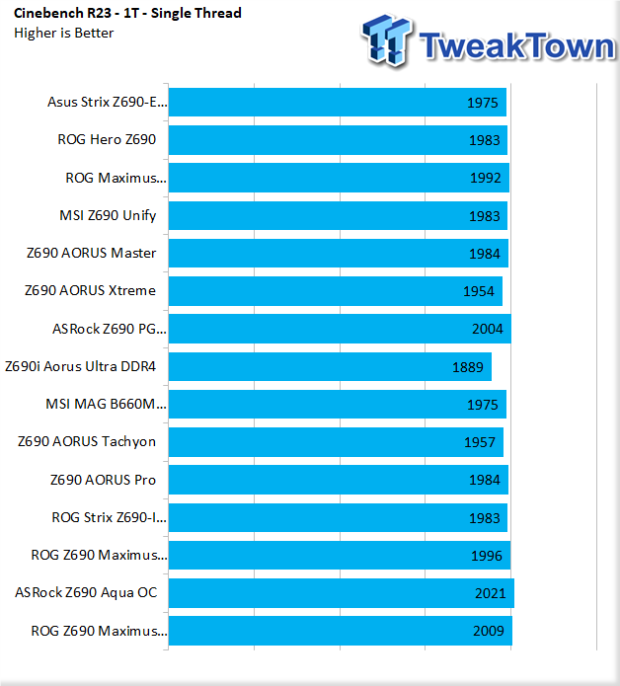
Testing puts the Glacial near the top in single thread R23. With this board, we managed to grab 2009 points, just slightly quicker than the Z690 PG and just behind the Aqua OC we just tested.
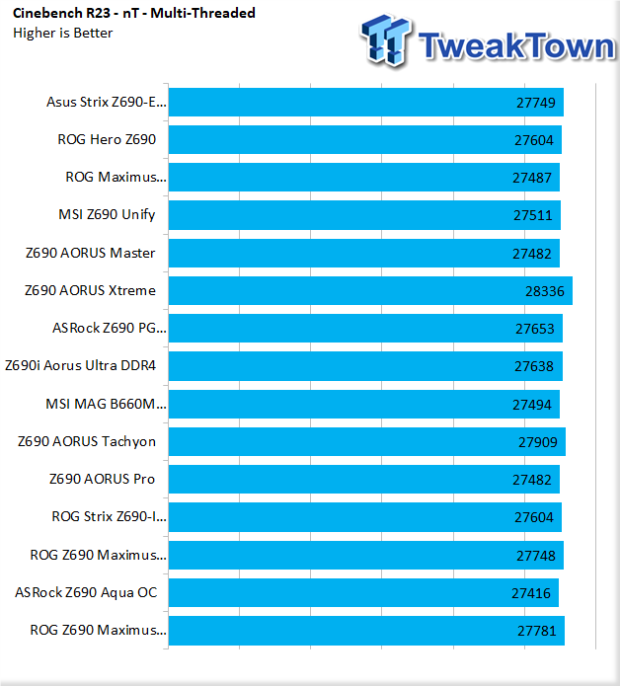
nT showed 27781, on par with other platforms.
AIDA64 Memory
AIDA was recently updated to version 6.6, which improved performance in both AES and SHA3 workloads for Alder Lake CPUs. You will notice this performance jump in the charts below when compared to any previous Z690 reviews.
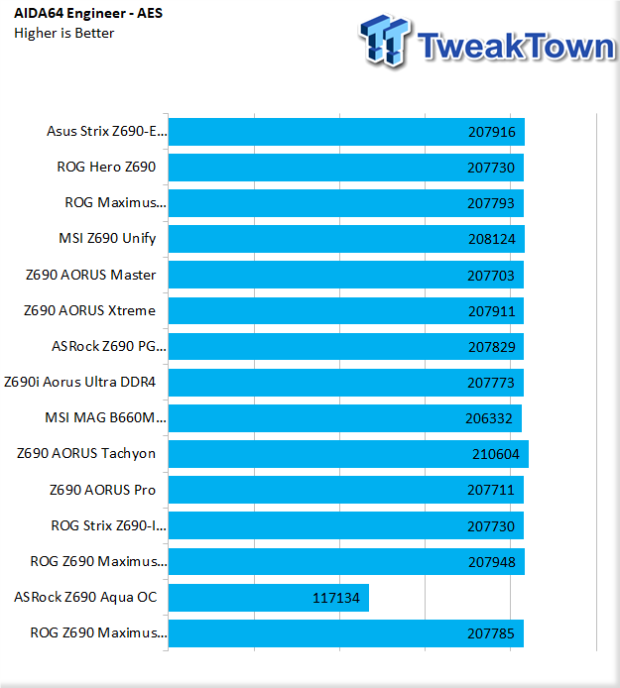
In AES, our performance was right where it should be, 207785 for the Glacial.
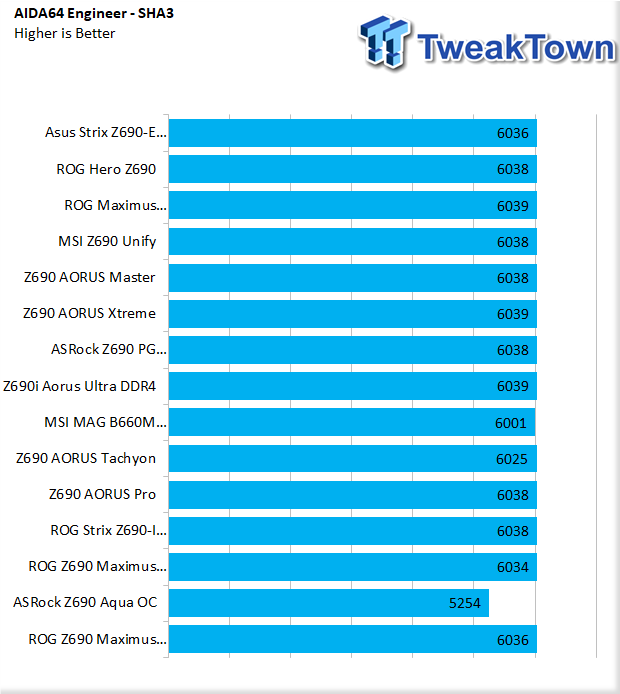
SHA3 tapped in at 6036.
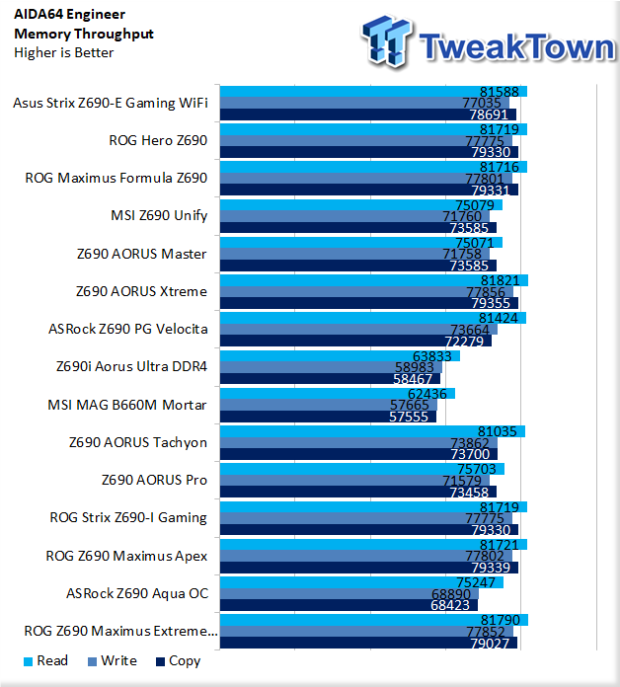
Memory throughput was on par with our Z690 platform average, 81K read, 77K write, and 79K copy.
PCMark10,3DMark and CrossMark Benchmarks
UL Procyon Suite
The UL Procyon Office Productivity Benchmark uses Microsoft Office apps to measure PC performance for office productivity work.
The Photo Editing benchmark uses Adobe® Lightroom® to import, process, and modify a selection of images. In the second part of the test, multiple edits and layer effects are applied to a photograph in Adobe® Photoshop®.
The Video editing benchmark uses Adobe® Premiere® Pro to export video project files to common formats. Each video project includes various edits, adjustments, and effects. The benchmark score is based on the time taken to export the videos.
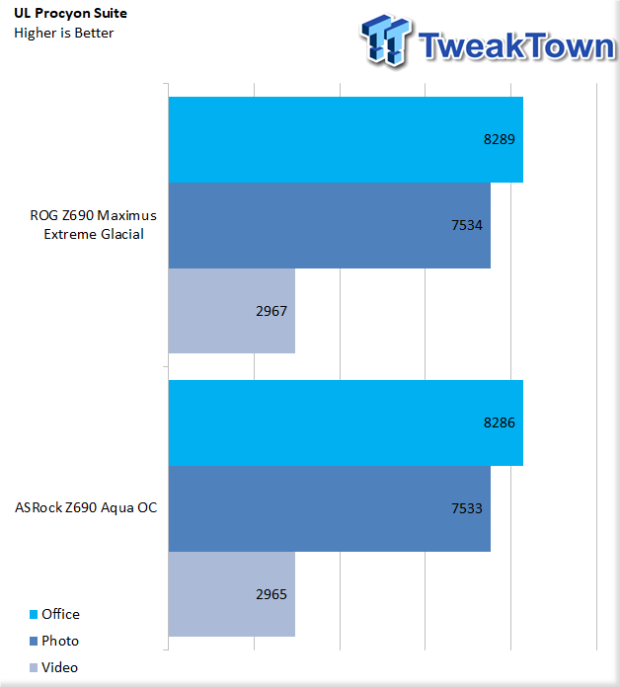
New to our testing is UL Procyon, which offers us the ability for more real-world testing in motherboard reviews. As seen above, the Glacial did very well, grabbing 8289 in Office, 7534 in Photo Editing, and 2967 for Video Editing.
CrossMark
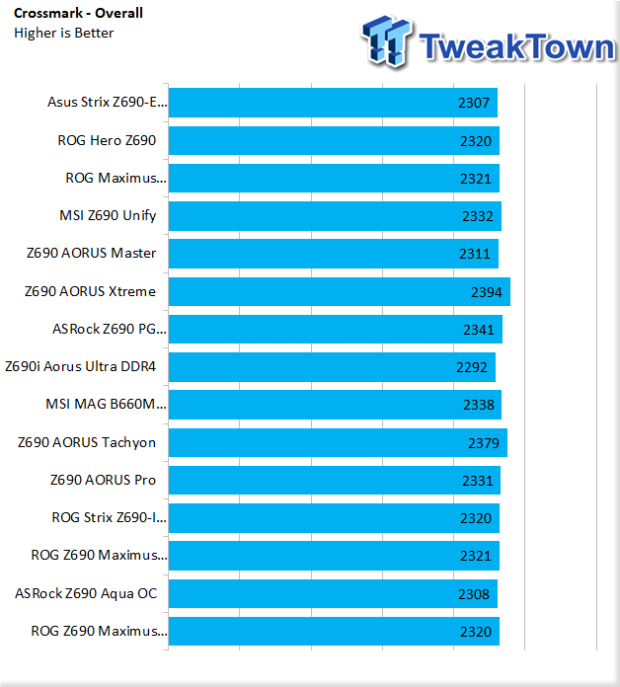
Crossmark turned a score of 2320, slightly above our platform average.
3DMark
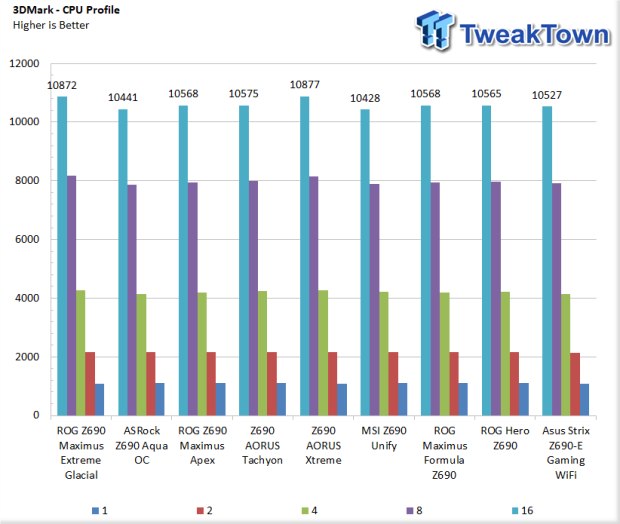
The Glacial turned out our second-highest score at 16-threads. 10872. This lands it just behind the AORUS Xtreme.
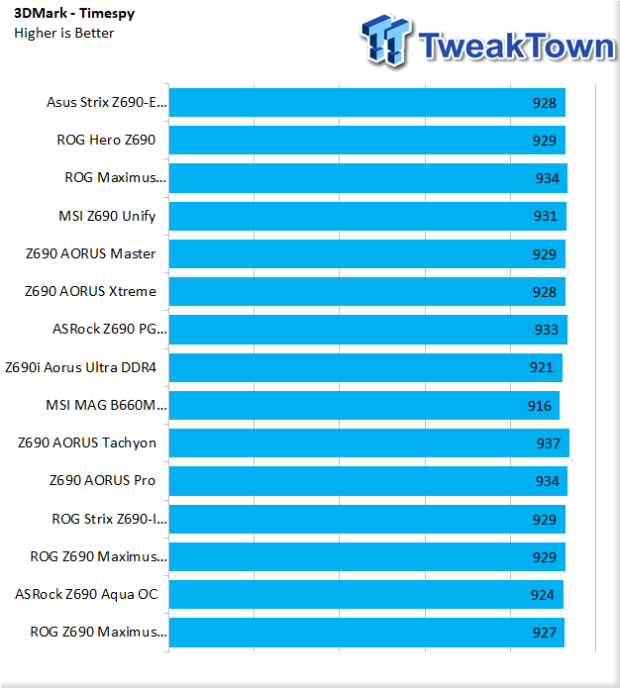
Timespy showed the Glacial on par with all other platforms. The score came in at 927 using the UHD 770 graphics.
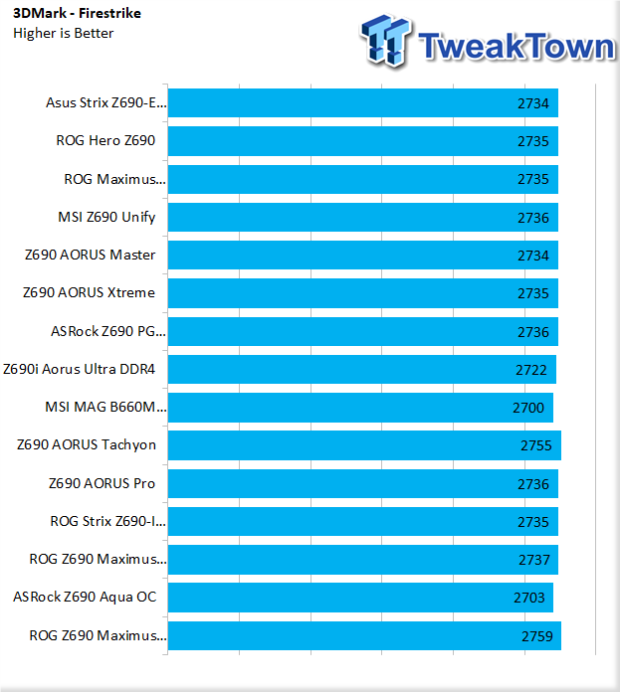
Firestrike, like Timespy, shows performance on par with other Z690 motherboards, score coming in at 2759.
Storage Benchmarks and Final Thoughts
3DMark Storage Benchmarks
UL's newest 3DMark SSD Gaming Test is the most comprehensive SSD gaming test ever devised. We consider it to be superior to testing against games themselves because, as a trace, it is much more consistent than variations that will occur between runs on the actual game itself. This test is, in fact, the same as running the actual game, just without the inconsistencies inherent to application testing.
In short, we believe that this is the world's best way to test an SSDs gaming prowess and accurately compare it against competing SSDs. The 3DMark SSD Gaming Test measures and scores the following:
- Loading Battlefield V from launch to the main menu.
- Loading Call of Duty Black Ops 4 from launch to the main menu.
- Loading Overwatch from launch to the main menu.
- Recording a 1080p gameplay video at 60 FPS with OBS (Open Broadcaster Software) while playing Overwatch.
- Installing The Outer Worlds from the Epic Games Launcher.
- Saving game progress in The Outer Worlds.
- Copying the Steam folder for Counter-Strike Global Offensive from an external SSD to the system drive.
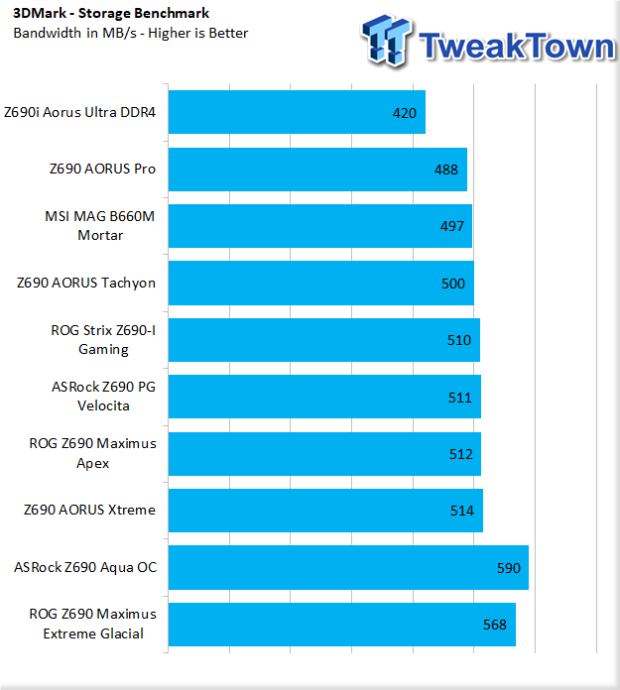
With several motherboards now tested under the new storage benchmark, we are starting to get a good idea of where our Rocket Plus should run. The Glacial managed 568 MB/s in this scenario, a bit behind our current leader, ASRock's Aqua OC.
Final Thoughts
As a consumer, it's hard for me to justify this platform, no matter what angle I look at it. Those building on this motherboard are right off the bat looking at a $4K+ build between the board, GPU, and CPU in the current market, likely more if you do it right. That said, images don't do it justice; the Glacial is an amazing-looking board, and when fully built and installed in your chassis, the RGB lighting centered in the ultrablock takes it even further.
That's not to mention the legit hardware this platform has. ASUS left no stone unturned on this motherboard, from a 24-phase power design to its massive storage capability with five m.2 slots alongside two Gen 5 x16 slots for dual GPUs. This can be taken even further with its huge array of USB 3.2 Gen 1 ports, alongside both Thunderbolt 4 and Gen2x2.
In testing, the Glacial proved quite good, running alongside our best platforms. 1T R23 put it 2nd in our charts to the Aqua OC, and using UL Procyon, we found a board that took top honors in Office, Photography, and Video editing workloads. We found the same to be true in CPU Profile, the Glacial coming just five points shy of the top slot, currently held by the Xtreme.
At the end of the day, is this board worth it? If you are a huge fan of ROG motherboards and want the very best available and plan to build a balls-out custom loop, then yes.
On the flip side, those that don't want the hassle of custom water-cooling, or the added expense for that matter, can pick up the standard Maximus Extreme at a $900 discount. Then there's always the ASRock Aqua OC with a similar build on the hardware side and includes the full board block for $500 less.

